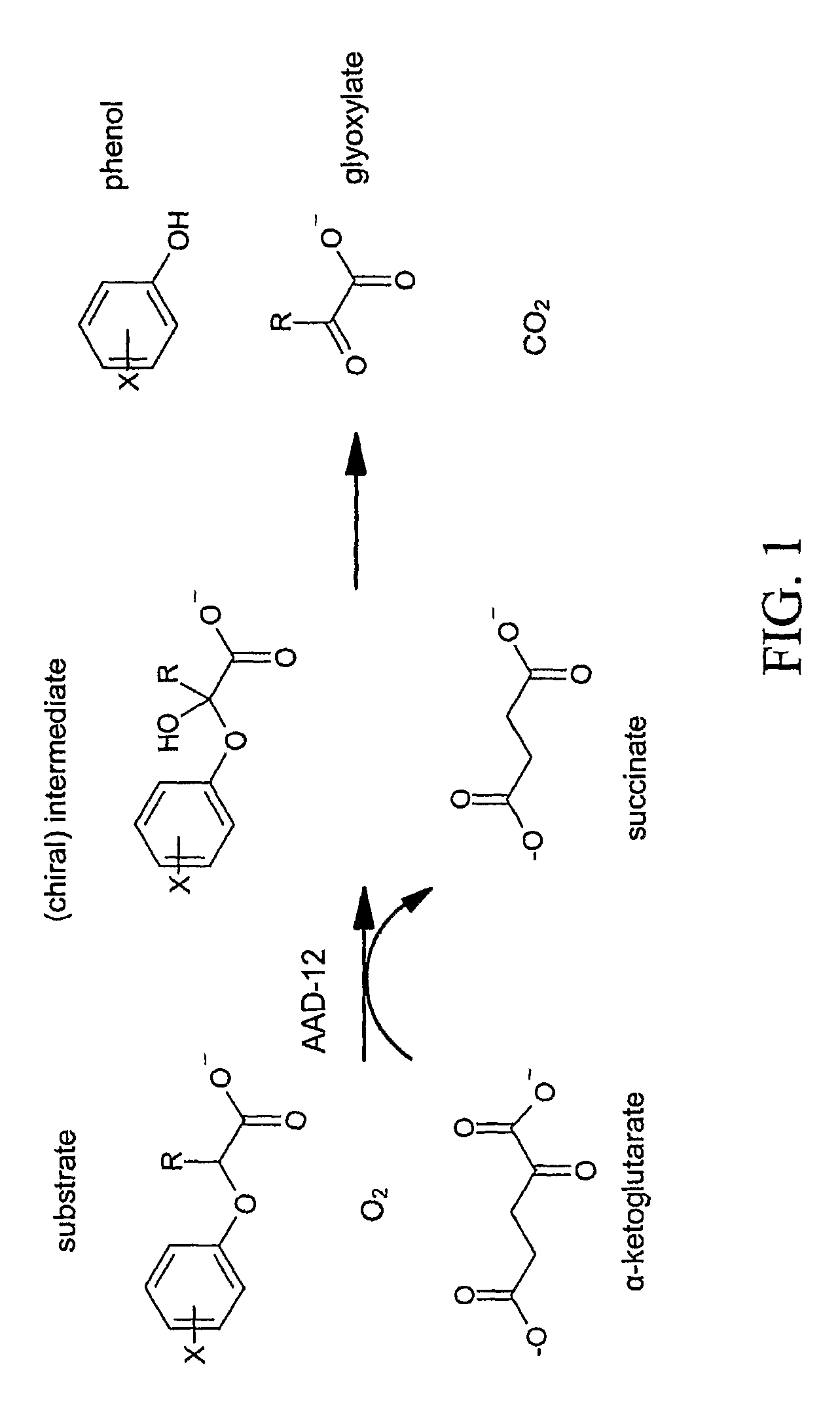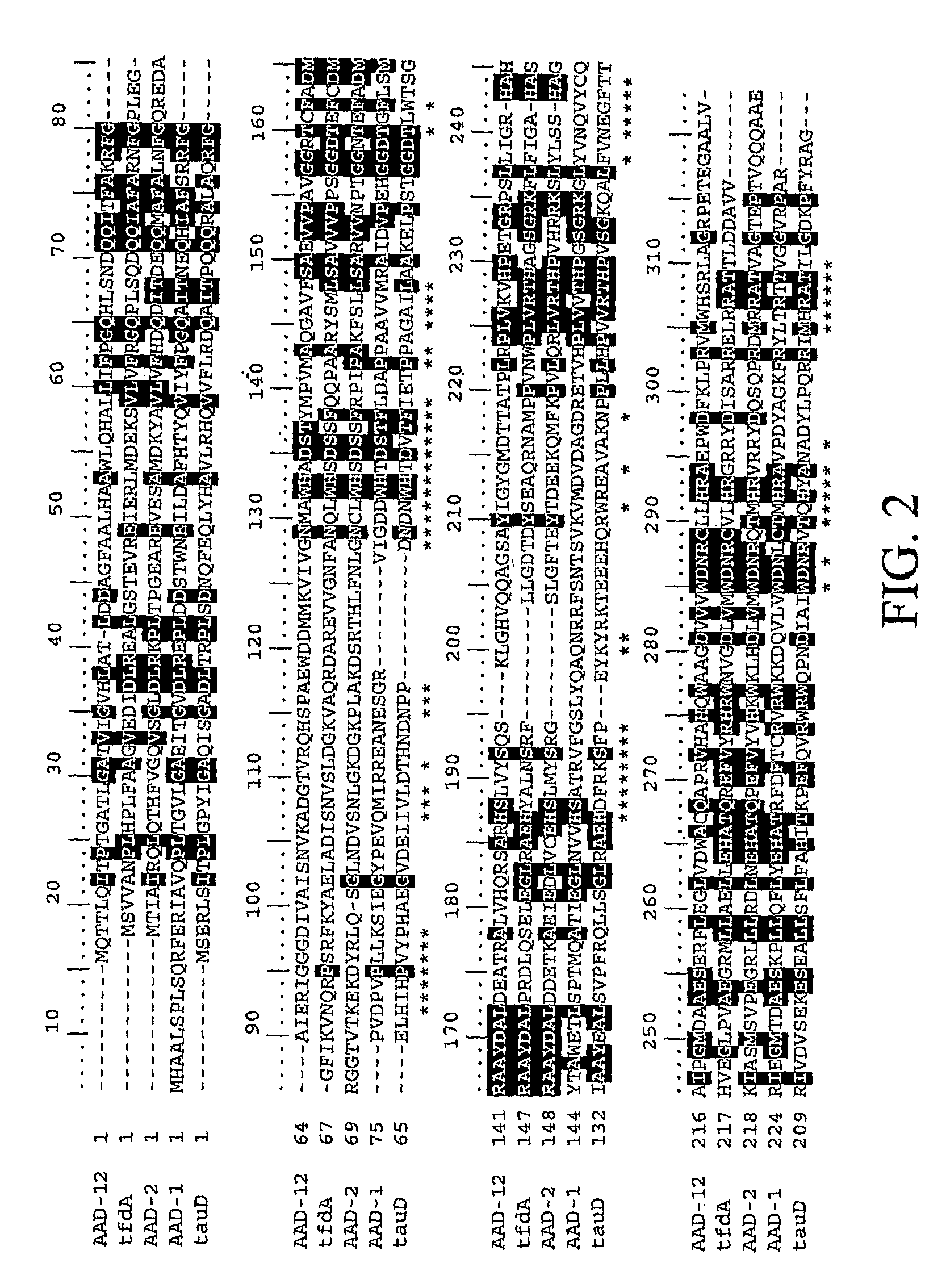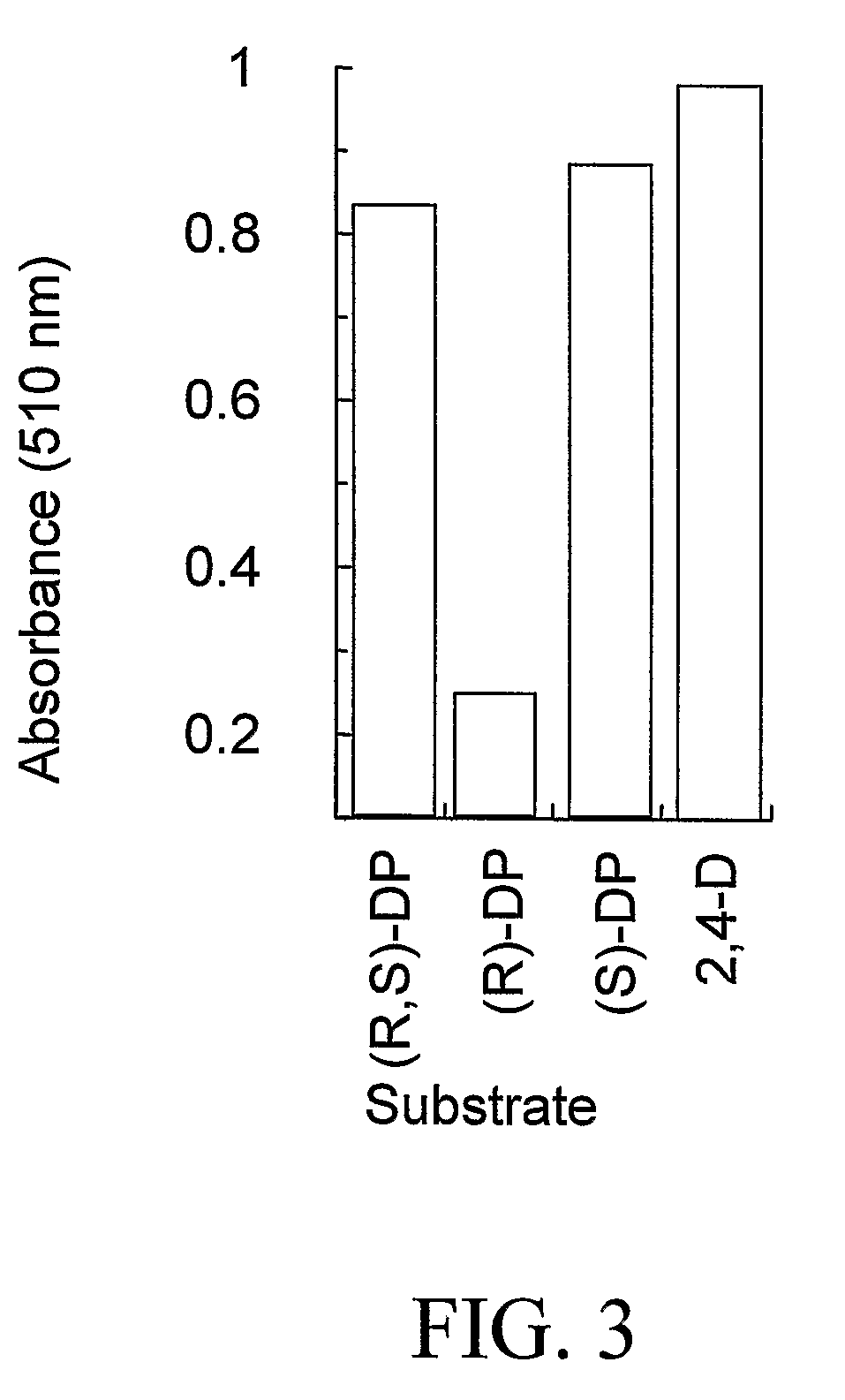Herbicide resistance genes
a technology of herbicide resistance and genes, applied in the field of herbicide resistance genes, can solve the problems of fewer conventional weed control programs that can effectively compete on price and performance, gtcs are now becoming more prevalent, and the cost of glyphosate has dropped dramatically. , to achieve the effect of preventing the shift of weed population
- Summary
- Abstract
- Description
- Claims
- Application Information
AI Technical Summary
Benefits of technology
Problems solved by technology
Method used
Image
Examples
example 1
Method for Identifying Genes That Impart Resistance to 2,4-D In Planta
[0164]As a way to identify genes which possess herbicide degrading activities in planta, it is possible to mine current public databases such as NCBI (National Center for Biotechnology Information). To begin the process, it is necessary to have a functional gene sequence already identified that encodes a protein with the desired characteristics (i.e., α-ketoglutarate dioxygenase activity). This protein sequence is then used as the input for the BLAST (Basic Local Alignment Search Tool) (Altschul et al., 1997) algorithm to compare against available NCBI protein sequences deposited. Using default settings, this search returns upwards of 100 homologous protein sequences at varying levels. These range from highly identical (85-98%) to very low identity (23-32%) at the amino acid level. Traditionally only sequences with high homology would be expected to retain similar properties to the input sequence. In this case, on...
example 2
Optimization of Sequence for Expression in Plants and Bacteria
[0166]2.1—Background.
[0167]To obtain higher levels of expression of heterologous genes in plants, it may be preferred to reengineer the protein encoding sequence of the genes so that they are more efficiently expressed in plant cells. Maize is one such plant where it may be preferred to re-design the heterologous protein coding region prior to transformation to increase the expression level of the gene and the level of encoded protein in the plant. Therefore, an additional step in the design of genes encoding a bacterial protein is reengineering of a heterologous gene for optimal expression.
[0168]One reason for the reengineering of a bacterial protein for expression in maize is due to the non-optimal G+C content of the native gene. For example, the very low G+C content of many native bacterial gene(s) (and consequent skewing towards high A+T content) results in the generation of sequences mimicking or duplicating plant ge...
example 3
Cloning of Expression and Transformation Vectors
[0190]3.1 Construction of E. coli, pET Expression Vector.
[0191]Using the restriction enzymes corresponding to the sites added with the additional cloning linkers (Xba 1, Xho 1) AAD-12 (v2) was cut out of the picoscript vector, and ligated into a pET280 streptomycin / spectinomycin resistant vector. Ligated products were then transformed into TOP10F′E. coli, and plated on to Luria Broth+50 μg / ml Streptomycin & Spectinomycin (LB S / S) agar plates.
[0192]To differentiate between AAD-12 (v2): pET280 and pCR2.1: pET280 ligations, approximately 20 isolated colonies were picked into 6 ml of LB-S / S, and grown at 37° C. for 4 hours with agitation. Each culture was then spotted onto LB+Kanamycin 50 μg / ml plates, which were incubated at 37° C. overnight. Colonies that grew on the LB-K were assumed to have the pCR2.1 vector ligated in, and were discarded. Plasmids were isolated from the remaining cultures as before, and checked for correctness with di...
PUM
| Property | Measurement | Unit |
|---|---|---|
| temperatures | aaaaa | aaaaa |
| melting temperature | aaaaa | aaaaa |
| Tm | aaaaa | aaaaa |
Abstract
Description
Claims
Application Information
 Login to View More
Login to View More - R&D
- Intellectual Property
- Life Sciences
- Materials
- Tech Scout
- Unparalleled Data Quality
- Higher Quality Content
- 60% Fewer Hallucinations
Browse by: Latest US Patents, China's latest patents, Technical Efficacy Thesaurus, Application Domain, Technology Topic, Popular Technical Reports.
© 2025 PatSnap. All rights reserved.Legal|Privacy policy|Modern Slavery Act Transparency Statement|Sitemap|About US| Contact US: help@patsnap.com



